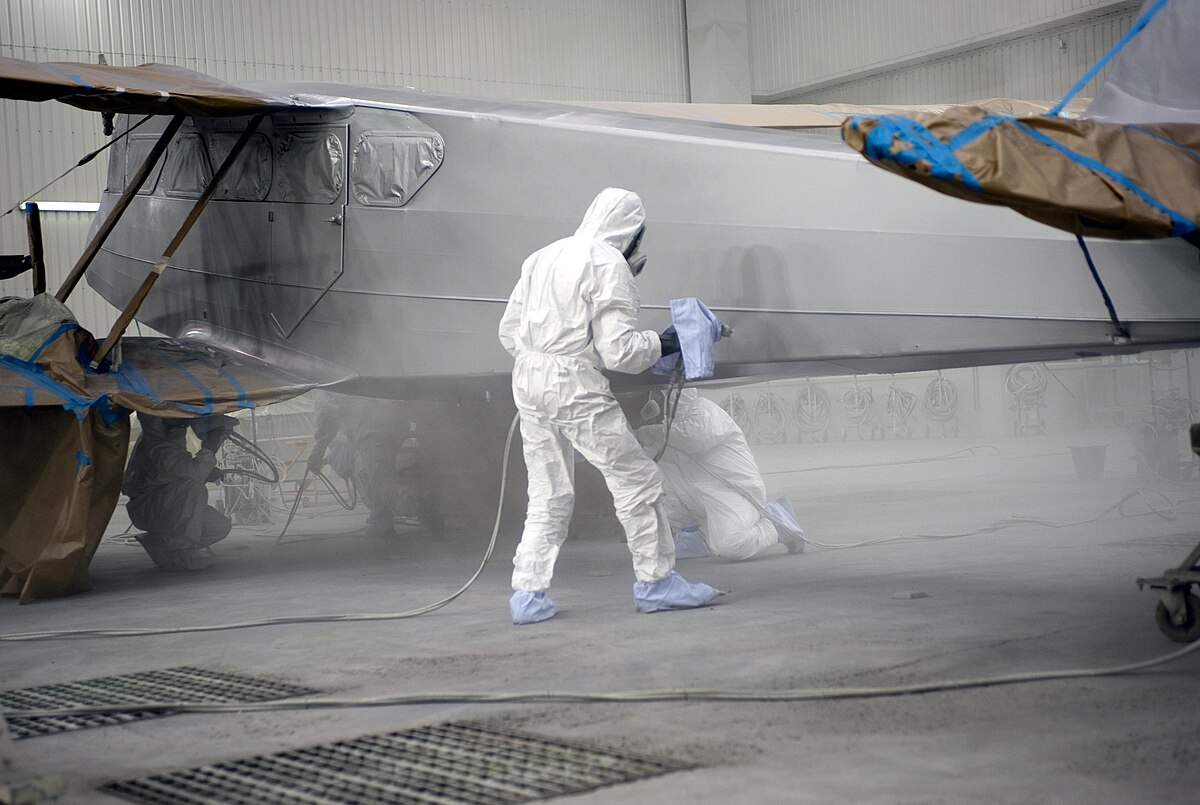
Achieve Perfect Aircraft Finishes Every Time: Big Tips for Tech Pros
Share
When it comes to aviation, the appearance of an aircraft is just as crucial as its performance. Achieving flawless finishes is essential for both aesthetic appeal and maintaining the aircraft's integrity. In this article, well delve into the world of aircraft finishes, providing you with exclusive insights and techniques to achieve perfect aircraft finishes every time.
For tech professionals and enthusiasts alike, mastering the art of aircraft painting is a necessary skill. From understanding different types of paint to employing the latest technology in inspection, this guide covers it all. Lets get started on this remarkable journey toward perfection.

The Importance of Aircraft Finishing
Aircraft finishing is more than just an aesthetic choice; it plays a significant role in protecting the aircraft against environmental factors such as UV radiation, moisture, and corrosion. A well-painted aircraft not only looks appealing but also enhances safety through improved visibility. Moreover, perfect aircraft finishes help maintain the aircraft's value and performance over time.
Choosing the Right Paint
Choosing the correct paint for your project is crucial. There are several types of paints available for aircraft, each serving a specific purpose:
- Polyurethane Paint: This is a popular choice due to its durability and gloss retention. It provides excellent resistance to chemicals and UV light.
- Epoxy Paint: Known for its strong adhesion and corrosion resistance, epoxy paint is often used in areas that require high durability.
- Acrylic Paint: This is lightweight and quick-drying, making it suitable for touch-ups and minor repairs.
When selecting paint, take into consideration factors such as application method, environmental conditions, and maintenance requirements.
Surface Preparation: The Key to Success
Proper preparation of the surface is essential for achieving a flawless finish. Here are vital steps to ensure your surfaces are ready:
- Cleaning: Begin by cleaning the aircraft thoroughly to remove dirt, oil, and contaminants. Use a quality aircraft paint remover to achieve this.
- Sanding: Use sandpaper or a power sander to level any irregularities and create a texture that the paint can adhere to.
- Masking: Use high-quality masking tape and paper to protect areas that should not be painted. This ensures sharp lines and a professional appearance.
With a well-prepared surface, you can achieve superior bonding and longevity of the paint.
Application Techniques for Perfect Finishes
Now that you have selected the paint and prepared the surface, its time to apply the paint. Here are some techniques to keep in mind:
- Spray Application: Using a spray gun allows for even coverage and minimizes the chances of drips and runs. Adjust the nozzle setting according to the paint type and desired finish.
- Brush Application: While not as common, brush application can be useful for small areas or touch-ups. Be sure to use high-quality brushes designed for the type of paint you are using.
- Roller Application: A roller can provide a smooth finish for larger surfaces. However, it requires some practice to achieve an even coat without streaks.
Keep in mind that applying multiple thin coats is generally better than a single thick coat. Each layer should dry completely before applying the next one.
Utilizing Technology in Aircraft Finishing
Today, technology plays a vital role in streamlining processes and ensuring high-quality finishes in aircraft painting. Some technologies to leverage include:
- Automated Inspection Systems: These systems can assess paint quality and detect defects before they become visible to the naked eye. For more details, check out this article on ensuring paint quality.
- AI-Powered Inspection: Boost your inspection process with AI tools that quickly identify flaws, saving time and resources. Learn more from this insightful piece on detecting defects faster.
- Advanced Application Equipment: Using state-of-the-art paint sprayers can reduce waste and improve efficiency, resulting in better finishes.
Common Mistakes to Avoid
Even seasoned professionals can make errors when it comes to aircraft finishing. Here are some common pitfalls to avoid:
- Skipping Surface Prep: Never underestimate the importance of surface preparation; inadequately prepared surfaces lead to peeling and uneven finishes.
- Ignoring Environmental Conditions: Avoid painting in unsuitable conditions. High humidity or temperature extremes can create problems with curing and adhesion.
- Using Incorrect Paint: Ensure the paint youve chosen is compatible with your aircraft's surface materials.
By avoiding these mistakes, you can enhance the longevity and appearance of your finishes.
Maintenance of Aircraft Finishes
Once youve achieved that perfect finish, ongoing maintenance is necessary to keep the aircraft looking its best. Here are some tips for maintain the finish:
- Regular Cleaning: Maintain a regular cleaning schedule to remove contaminants and dirt. Use a mild detergent designed for aircraft.
- Inspect for Damage: Periodically inspect your aircraft for any paint damage or signs of corrosion, addressing issues promptly.
- Reapplication: Depending on the wear and tear, you may need to reapply or touch up the paint every few years.
Emphasizing maintenance ensures that your hard work pays off over the long run.

FAQs
What type of paint is best for aircraft?
The best type of paint depends on the specific requirements of the aircraft. Polyurethane and epoxy paints are popular choices due to their durability.
How long does aircraft paint last?
With proper maintenance, aircraft paint can last anywhere from five to fifteen years, depending on environmental exposure and care.
What equipment is needed for painting aircraft?
You will require a spray gun, brushes, rollers, masking materials, sandpaper, and a suitable space for application and drying.
By following these guidelines and tips, tech professionals can achieve perfect aircraft finishes every time. With a blend of traditional techniques and modern technology, your aircraft will soar with style and safety. Start today, and see the remarkable difference in your aircraft finishing projects.
Choosing the Right Aircraft Paint.